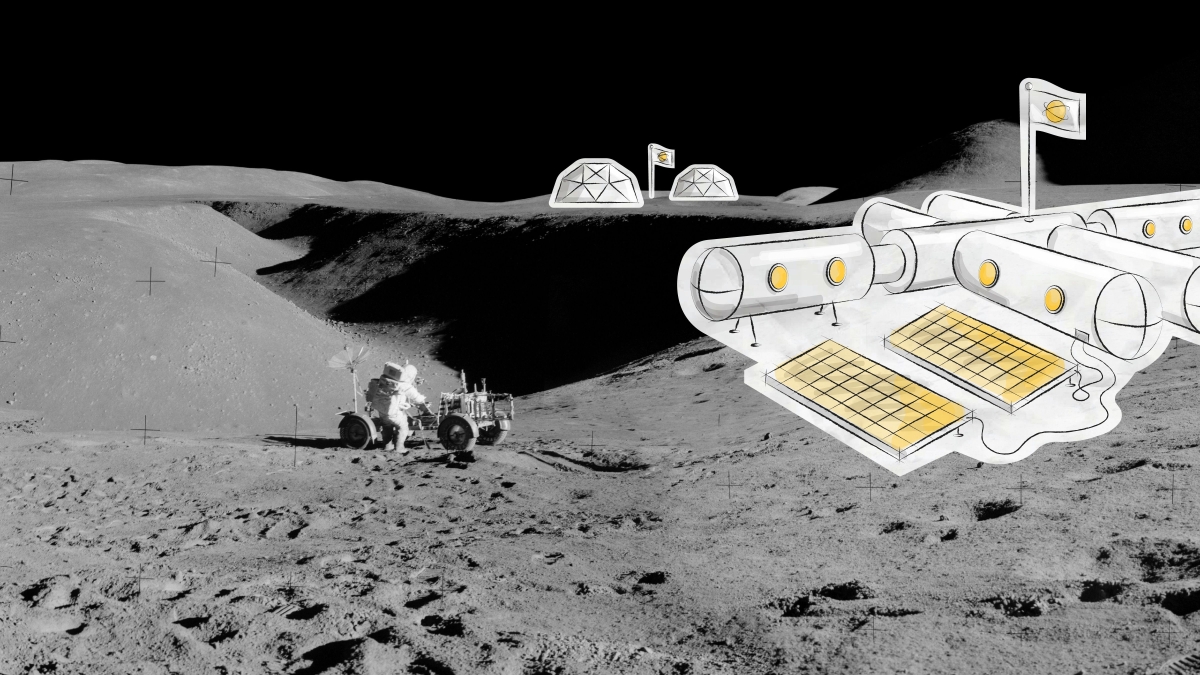You might as well be walkin' on the moon
ASU's Interplanetary Initiative hosts expert panel to discuss what it will actually take to move to the moon

Living on the moon has been depicted in popular culture for decades: Typically, astronauts scamper around odd-looking buildings or zip around in dune buggies.
Now that the time to actually send people to live on the moon is nigh, what will that take? How will we pull it off? What will we ship up there? And what can we use once we get there?
Many of those questions were discussed last week during an expert panel discussion sponsored by Arizona State University’s Interplanetary Initiative.
The event was part of the Moon Dialogs, a series of policy development workshops for subject matter experts in both space and terrestrial policy.
First, costs need to come down, said Brent Sherwood, vice president at private space company Blue Origin. The company’s mission is to have millions of people living and working in space.
There is a budget sustainability aspect. For example, the International Space Station is very expensive. But space will become less expensive once private capital becomes involved.
“That’s how you make it truly sustainable,” Sherwood said.
Alexander MacDonald, chief economist of NASA’s Office of the Administrator, said government can spur a space-based economy by demanding at least two robotic missions a year, and then opening it up to private companies.
Being sustainable on the moon will mean launch frequency, said Dava Newman, the Apollo Professor of Aeronautics and Astronautics at MIT and former deputy administrator of NASA. A half dozen launches a year is not going to cut it, she said.
Sherwood agreed. Getting more people into space more often is key. And it’s important not to neglect development of low Earth orbit for human space flight, he said.
NASA is approaching moon settlement as a sustainable venture, MacDonald said.
Any moon voyage needs to leave the foundation for permanent settlement. What is the minimum we need? It should be 30 days, he said. NASA already has a plan for sustained lunar exploration and development, but settlement – living on the moon permanently – is a long way off right now.
Must-haves include a lunar vehicle, a pressurized rover for overnight trips away from the lander, and a surface habitat, he said.
“As an economist, I’m worried we need to be able to afford at least those three things,” MacDonald said.
Newman added suits to the list. Current suits don’t work like you see in movies like "The Martian," where astronauts pop out of it like they’re shucking off a pair of jeans. (According to NASA, it takes 45 minutes to put on a current space suit.)
Precursor missions should use a whole suite of exploration resources — both robotic and human, Newman said.
“We can’t be afraid to fail,” she said. “A lot of systems are not going to work.”
All of our electronics and systems need to be shielded from radiation — and we don’t know enough about the radiation there, Newman said.
“We’re going to a place where we’re going to have to learn to live off the land,” Sherwood said — a first in space exploration.
“We have to learn to operate in those conditions, we have to learn to be safe, we have to do scientific investigations of what materials are there,” he said.
You can’t build anything without understanding the materials available there, and you can’t do that down here, Sherwood added. How much radiation shielding will the regolith — the dust and broken rock on the lunar surface — provide? A meter? Two meters?
“We have to get through that phase before we talk about scaling up,” he said. “That’s a critical step.”
Once resources are found for the private sector to exploit, that will really open up development and settlement. We don’t know what materials from the moon that the terrestrial economy needs, Sherwood pointed out.
Finally, international sharing of data and information will be crucial.
“We don’t want to go to a hostile environment as multiple nations without the ability to plug into each others’ stuff,” he said.
Even with these challenges, possibilities for lunar colonies are endless.
“I want to send students to the moon,” Newman said. “Semester on the moon — seriously.”
Top illustration by Alex Davis and Charlie Leight
More Science and technology

Famed systems engineer inspires ASU to tackle global problems
“Providing great talent with great opportunity can make a great difference.” Such was a key part of the message delivered by G. Don Taylor, executive vice provost and the Charles O. Gordon Professor…

The science behind chronic stress
Stress comes in many shapes and sizes. There’s the everyday stress of preparing for a final exam or being stuck in traffic. And the more significant stress of losing a friend, family member,…

ASU planetary scientist to be inducted into the National Academy of Sciences
The National Academy of Sciences is inducting School of Earth and Space Exploration Director Meenakshi Wadhwa into the 2023 class of new members for her pioneering work in planetary sciences and…